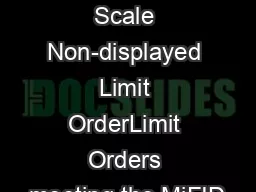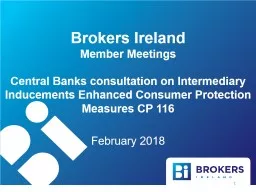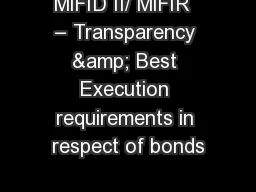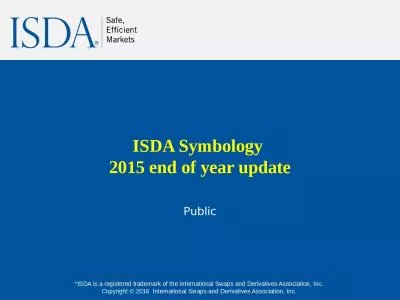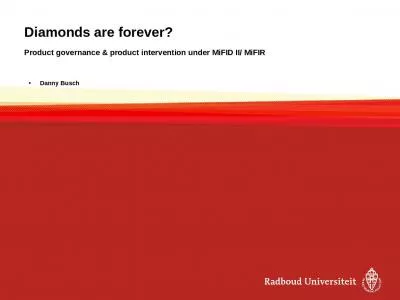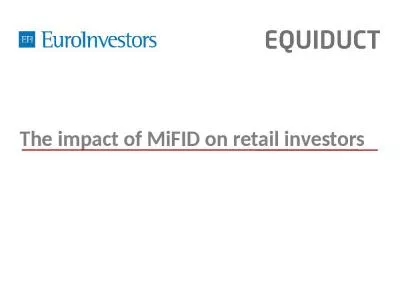PPT-MiFID II/
Author : debby-jeon | Published Date : 2017-08-13
MiFIR Transparency amp Best Execution requirements in respect of bonds 27 April 2016 Vienna Elizabeth Callaghan Overview Key objectives of MiFID IIR amp transparency
Presentation Embed Code
Download Presentation
Download Presentation The PPT/PDF document "MiFID II/" is the property of its rightful owner. Permission is granted to download and print the materials on this website for personal, non-commercial use only, and to display it on your personal computer provided you do not modify the materials and that you retain all copyright notices contained in the materials. By downloading content from our website, you accept the terms of this agreement.
MiFID II/: Transcript
Download Rules Of Document
"MiFID II/"The content belongs to its owner. You may download and print it for personal use, without modification, and keep all copyright notices. By downloading, you agree to these terms.
Related Documents


